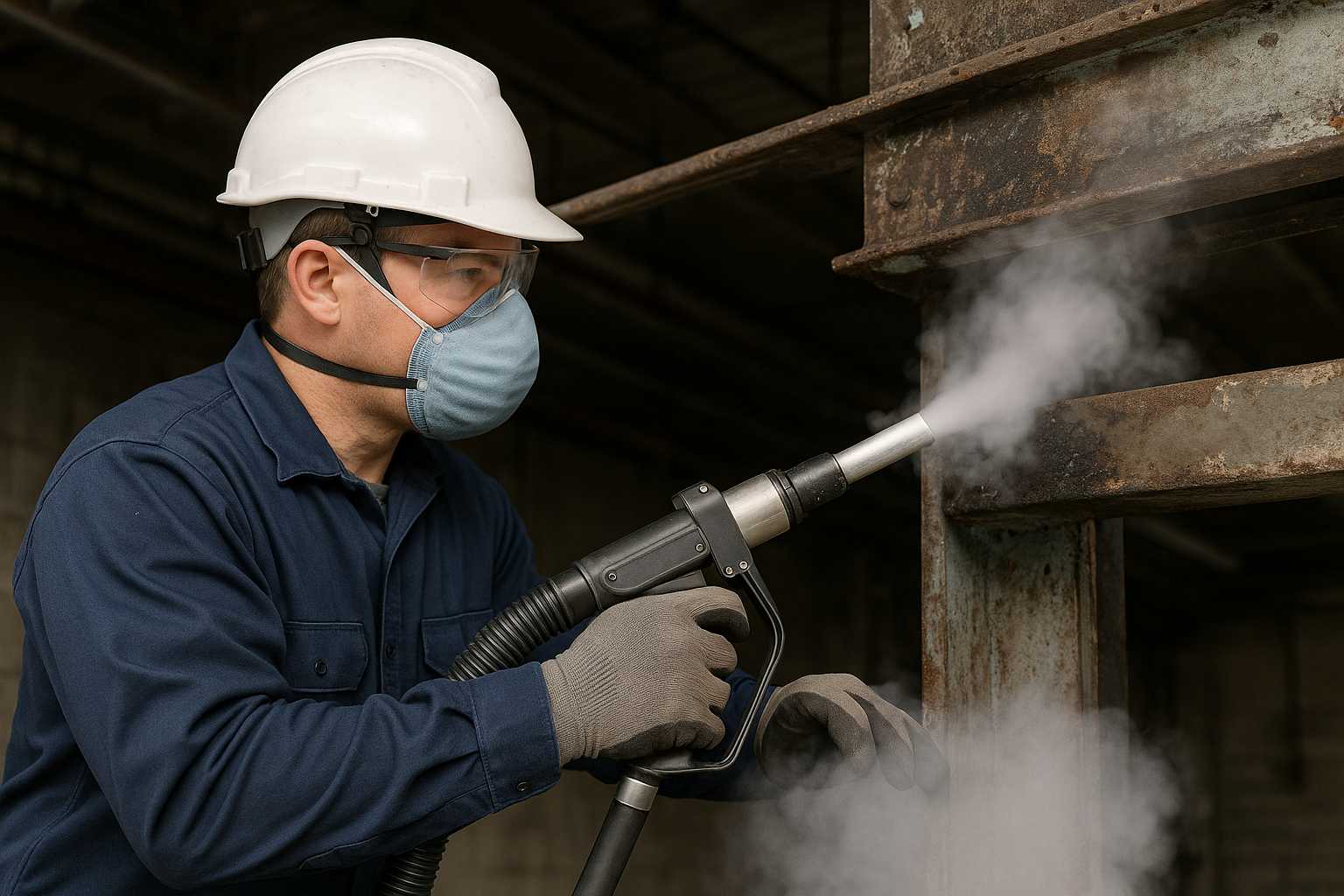Introduction
Industrial cleaning has advanced far beyond water, solvents, and abrasives. Among these innovations, dry ice blasting has become an environmentally responsible and highly efficient alternative to sandblasting, pressure washing, or chemical cleaning. Yet, despite its growing adoption, many facility managers still wonder whether the technology justifies its higher cost and specialized equipment.
This article explores the advantages and drawbacks of dry ice blasting compared with traditional cleaning methods. By examining both approaches through practical, environmental, and economic lenses, readers can determine which solution best fits their operational needs.
Understanding Dry Ice Blasting
Dry ice blasting uses compressed air to accelerate solid carbon dioxide pellets toward a surface. On contact, the dry ice sublimates—instantly transforming from solid to gas—and lifts away contaminants without leaving behind residue.
Because the process is non-abrasive and non-conductive, it can clean sensitive equipment, electrical components, and delicate molds that would otherwise be damaged by water or grit.
Dry ice blasting doesn’t rely on chemicals or moisture. Instead, its cleaning effect results from three mechanisms:
- Kinetic energy: Pellets strike the surface at high velocity, dislodging dirt and coatings.
- Thermal shock: Rapid temperature change causes surface contaminants to contract and detach.
- Sublimation expansion: The CO₂ gas expands rapidly—by about 800 times its solid volume—lifting debris from microscopic crevices.
How Traditional Cleaning Methods Compare
Traditional cleaning techniques vary widely, but most fall into three categories: mechanical abrasion, chemical dissolution, and water-based cleaning.
- Abrasive methods, such as sandblasting or bead blasting, remove surface coatings by physically eroding material. They are effective for heavy buildup but risk damaging substrates.
- Chemical cleaning dissolves oils, adhesives, or oxidation using solvents or acids. While thorough, these processes often require ventilation systems, hazardous waste disposal, and additional rinsing steps.
- Water-based cleaning, including power washing and steam cleaning, relies on temperature and pressure. These methods handle organic dirt and light residues well but struggle with oil-based contaminants and require drying time afterward.
Each traditional approach involves secondary waste, longer cleanup times, and potential environmental or safety concerns.
Advantages of Dry Ice Blasting
1. Residue-Free Cleaning
Because dry ice sublimates completely, it leaves no secondary waste—only the removed contaminant. This simplifies post-cleaning operations and eliminates the need for wastewater management, unlike pressure washing or chemical rinsing.
2. Reduced Downtime
Dry ice blasting often occurs in place without disassembling machinery. Production lines can resume faster because components remain dry and require no cooling or drying periods afterward.
3. Safety and Environmental Responsibility
Dry ice blasting uses non-toxic, food-grade CO₂—often reclaimed from industrial processes—so it adds no new greenhouse gases. Workers avoid exposure to solvents or caustic agents, reducing health risks and the need for protective equipment.
4. Extended Equipment Life
Unlike abrasive blasting, which can thin metals or damage coatings, dry ice cleaning is non-abrasive. It removes contaminants while preserving underlying surfaces, wiring, and seals. In industries like food processing and electronics, this property is critical for maintaining certification and preventing product contamination.
5. Regulatory Compliance
For facilities under FDA, EPA, or USDA oversight, dry ice blasting helps meet sanitation standards without introducing foreign chemicals. Many plants use it to clean conveyors, packaging lines, and mold surfaces in compliance with hygiene codes.
Drawbacks of Dry Ice Blasting
1. Higher Initial Cost
The equipment—compressors, hoses, and pelletizers—requires a higher investment compared with simple power washers or sandblasters. Moreover, CO₂ pellet supply and delivery add operational costs that may exceed conventional media.
2. Operator Expertise
Although the process appears straightforward, optimal performance demands training. Inexperienced operators may waste pellets or fail to achieve consistent results, especially on complex geometries or sensitive equipment.
3. Limited Surface Removal Capability
Dry ice is non-abrasive by design. While perfect for grease, paint, or biofilm removal, it cannot strip thick rust or heavy coatings. For surface preparation before repainting, abrasive methods remain superior.
4. Ventilation Requirements
The sublimated CO₂ gas can displace oxygen in confined spaces. Facilities must ensure proper ventilation or use gas monitoring equipment to maintain safe working conditions.
5. Availability and Logistics
In remote areas, dry ice supply may be inconsistent or costly. Pellets must be stored below –78°C and used quickly, as they naturally sublimate over time.
Advantages of Traditional Cleaning Methods
Despite its limitations, traditional cleaning retains several strengths:
- Accessibility: Equipment and materials are widely available.
- Low Initial Cost: Entry-level systems cost far less than dry ice units.
- Proven Effectiveness: For heavy corrosion, scaling, or old coatings, abrasive or chemical cleaning still provides faster removal.
- Familiarity: Many operators already possess training and certifications for these methods, minimizing onboarding needs.
However, these benefits often come with trade-offs—notably environmental impact, equipment wear, and the cost of waste management.
Environmental and Operational Comparison
| Factor | Dry Ice Blasting | Traditional Cleaning |
|---|---|---|
| Residue | None (CO₂ gas only) | Slurry, wastewater, grit |
| Surface Damage | None (non-abrasive) | Possible (abrasive or corrosive) |
| Worker Safety | No chemicals | Risk from solvents or particulates |
| Downtime | Minimal | Moderate to high |
| Operating Cost | Moderate to high | Low to moderate |
| Environmental Impact | Uses reclaimed CO₂ | Generates waste |
| Precision | High | Variable |
Industrial Applications
Dry ice blasting serves industries where precision, safety, and cleanliness outweigh the need for aggressive surface removal. Examples include:
- Food processing: Removes baked-on grease and protein residues without chemicals.
- Automotive manufacturing: Cleans paint booths and engine molds without abrasion.
- Electrical maintenance: Safely cleans switchgear, turbines, and windings.
- Aerospace and composites: Removes release agents without altering surface geometry.
In contrast, traditional methods remain standard in shipyards, construction, and heavy equipment refurbishment—contexts that prioritize cost efficiency and coating removal power.
Choosing the Right Approach
The decision between dry ice blasting and conventional cleaning depends on surface material, contamination type, cost tolerance, and sustainability goals.
For organizations focused on lean operations and environmental responsibility, dry ice blasting provides long-term savings through reduced waste handling and extended equipment life.
Where budget constraints or heavy corrosion removal dominate, traditional techniques may still prevail. A hybrid strategy—using abrasive methods for initial stripping followed by dry ice for fine cleaning—can offer the best of both worlds.
Conclusion
Dry ice blasting represents a modern response to the growing demand for clean, efficient, and sustainable industrial cleaning. Its unique advantages—no residue, minimal downtime, and safety for delicate equipment—make it particularly valuable in regulated or precision-driven industries.
While higher costs and logistical requirements remain valid concerns, its environmental and operational benefits often offset these drawbacks over time.
Ultimately, the decision hinges on context. Facilities seeking environmental compliance, reduced waste, and process efficiency will likely find dry ice blasting a forward-looking investment, while those requiring heavy-duty material removal may continue to rely on traditional methods until broader cost reductions make dry ice technology universally practical.





